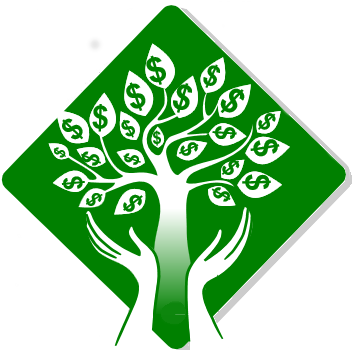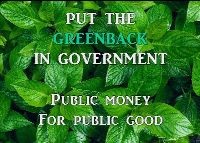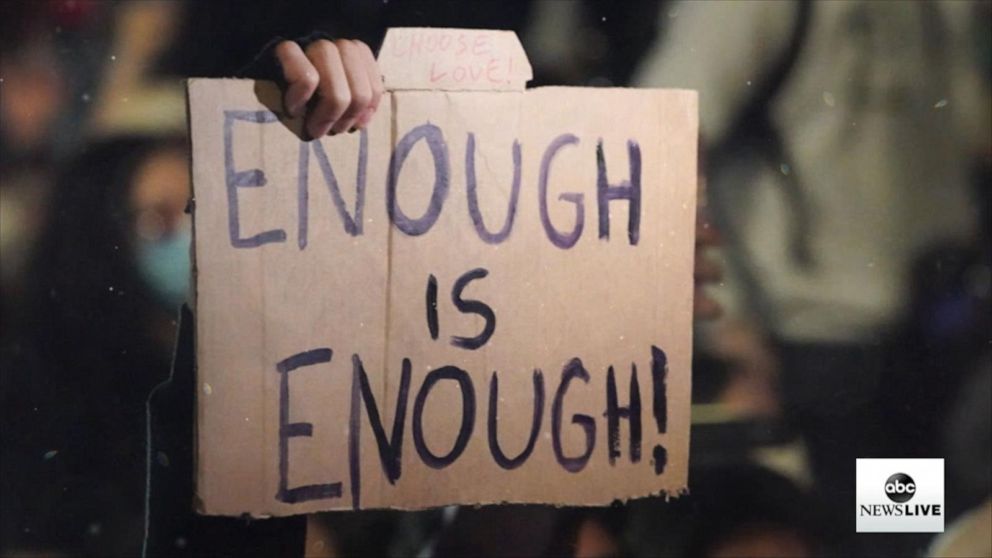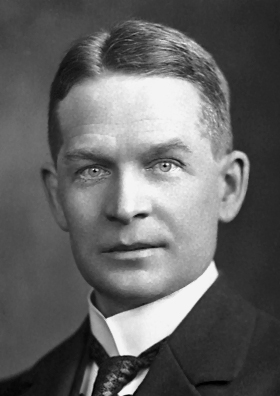Who Invented Money?
By Howard Switzer
Our world is the most astonishing living miracle in the universe. We continue to search the infinite heavens of course and so far, have found nothing that even comes close to the richness of life here on our Mother Earth. Our indigenous ancestors, world-around, worshiped this rare living planet as the Earth Mother and believed all life to be a gift from Her. That gift of life implied a debt that each person owed to the Earth Mother, and they would not take from Her without there being an exchange in which they gave something in return as a ritualized symbolic payment. There are people today of native ancestry who retain this practice.
I know a surveyor of native ancestry who does this before beginning his work to “pay” for all the plants he will need to cut out of his way to do his work. The Koge natives come down from the mountains of Colombia along the river to the sea every year in order to make a ‘payment’ to the Earth Mother. This ancient practice hearkened the origin of money, a human invention ranking with fire and the wheel, but an innovation much more mysterious because it is an abstraction made real by custom or law. In native culture it was reciprocity often represented with corn meal or tobacco, others used shells, teeth or feathers, as a way to pay a debt. In some cultures, this symbolic money began to be used for trade as well, but it was still a ‘public’ system. That is until the kings and priests of a corrupt civilization emerged discovering usury, the abuse of monetary authority for personal gain. However, I think it is especially important to understand that money was invented to pay our collective debt to the Earth Mother and that this civilization has ignored that debt to the point where foreclosure is becoming imminent.
Yet there are presumably smart people out there who claim all money itself is a debt to whomever creates it rather than a debt-free means of payment. That is convenient for those who create money as debt when they make loans merely by typing numbers into a ledger and charging interest on it. How crazy is it to create money as a debt? When money is created as debt you cannot pay a debt without creating more debt, an endless spiral taking you and society deeper and deeper into debt. Sadly, that is exactly the kind of money system we have today, one that systematically concentrates wealth to the wealthiest while depleting the source of all wealth, the Earth Mother, our planet. Then, with the compounding of interest, this becomes exponential. The world around debt today, in 2021, is approaching 300 trillion dollars. It is an amount that everyone including the experts recognize as unpayable and yet we are all forced to do so by law.
The history of money is a suppressed history making correcting the historical record more difficult as well as funded efforts to keep people confused about money. Thanks to a few heroic individuals the information is available and despite the many rabbit holes, booby traps and intellectual minefields strewn along the path, it can be obtained. The monetary history is important because without it we cannot have an accurate picture of the power dynamics that have been in play over the last few thousand years nor understand them today. As Carl Sagan said, “You must know the past in order to understand the present.”
The great economist/historian/diplomat, John Kenneth Galbraith said as much about money. Many historians, economists and other academics who have written about how the money system works, however, have had their careers threatened. One acknowledgment of this is the story Bernard Lietaer told about being there when Paul Krugman was awarded the so-called Nobel Prize for economics. Shortly before Paul was to accept the prize Bernard asked him, “With all of your public influence why don’t you tell people how the money system works?” Paul replied, “Didn’t they tell you that if you touch the money, it will kill your academic career?”
Money has long been the “third rail” for an economist’s career, a fitting metaphor since that is indeed where the power is. The power over public policy, the power to direct economic development, the power to extract the wealth of the commons, the power to make war for profits. Therefore, we need to change the monetary system to a public system. Our economic stability as well as our very existence may depend on it.
The solution is to stop using privately created credit for money and use publicly created money for money. It sounds funny but the Stanford University Encyclopedia of Philosophy says there are two monetary theories. The Commodity Theory wherein a commodity is used for money and the Credit Theory of money wherein debt is used for money until it is paid off. Both systems are easily dominated by private interests who can control the commodity or the credit. In our current system all money is credit created as interest bearing debt by banks when they make loans.
Why is there no Money Theory of money? This is one of the big secrets protected by “public incredulity” Marshall McLuhan referred to. As the Constitution indicates, government can create debt-free sovereign money but has rarely been allowed to and it is even illegal today. Therefore, it is important that Congress change the money system, to put elected government back in control of the money, its elections and public policy. Groups like the American Monetary Institute, The Alliance for Just Money, and the International Movement for Monetary Reform are all advocating this, and the Green Party of the United States is the only political party with this in its platform. They all deserve our support.

Part 2 THE MONEY MATRIX: WAR
By Sue Peters
When a commercial bank makes a loan contract with a borrower, the bank CREATES the deposit in the borrower’s account. This is the “money power.” Have you repeated this fact 15,000 times yet? Whoever controls this ‘money power,’ decides if the nation will go to war. Here is a case study from World War I.(1)
INVESTMENT BANKS
By 1912, the large New York and Chicago commercial banks were controlled by a cartel of powerful investment banks. Investment banks are private businesses and do not have authority to issue banknotes or create deposits, but their control of the large commercial banks allowed them to wield the ‘money power’ and gain control over the large industrial corporations of the time. The most powerful of investment banker was J.P. Morgan. (2)
U.S. ‘NEUTRALITY’
War broke out in Europe in August, 1914. The U.S. was neutral, but in January, 1915, the firm of J.P. Morgan signed a Commercial Agency Agreement with the British government to enter “into a wide range of purchasing and contracting arrangements with American firms in behalf of the United Kingdom.”(3) In May, 1915, France did the same. J.P. Morgan organized the financing of war purchases, decided which American companies would be suppliers, and set the prices of the final products. “Not surprisingly, corporations directly in the Morgan and Rockefeller groups of companies were the prime beneficiaries of Morgan’s astute purchasing.”(4)
England and France shipped their gold to Morgan to help finance the purchases. On December 4, 1916, the U.S Secretary of the Treasury reported that the U.S. stock of gold was the largest ever in our history, and indeed ever in the history of the world! The gold had found its way into the reserves of the private Fed Banks and their commercial bank owners.
England and France sent Morgan their citizens’ confiscated U.S. stocks and bonds to sell to American citizens on the U.S. exchanges. England and France also borrowed about $2.4 billion from the U.S. bond markets. All these securities were sold by Morgan, using the cartels’ control over the large commercial banks, members of the new Federal Reserve System. U.S. citizens bought the securities, many taking out bank loans to do so. The commercial banks themselves also bought the securities. The bank loans created bank-money, but in addition the banks’ purchases of these securities also created bank-money. Surprise! Note well: legally, when a commercial bank buys a stock or bond, they can CREATE the deposit in the seller’s account!
By the eve of the U.S. entry into the war, Morgan had shipped $5 billion worth of war materials, the economy was booming, and the U.S. had become the leader of world finance. Morgan himself loaned a half billion dollars to the Allies. But still the Allies needed more credit to keep waging the war.
U.S. ENTERS WWI
By the beginning of 1917, the Allies were desperate for more loans, but Morgan had reached his limit. The U.S. Ambassador to Great Britain informed President Wilson that the Allies would lose the war unless they got more loans. If the U.S declared war on Germany, our government could extend such loans and the U.S. could continue to supply war materials. Our prosperity and trade would continue. On April 2, 1917, President Wilson asked congress for a declaration of war since “The world must be made safe for democracy.”
POWER OF THE CARTEL’S FEDERAL RESERVE SYSTEM
The 1913 Federal Reserve Law had been pushed through Congress by the banking cartel. The 1913 Law gave the Fed Banks the power to issue a new private currency called Federal Reserve Notes (Fed Notes), as the debt of the government, not an asset like the money issued directly by the Treasury. The U.S. Congress had handed this incredible power to the private banking cartel with the 1913 Law!
As the U.S. declared war on Germany, the Fed Law was amended to empower even more bank-money creation by the member commercial banks – with massive death and destruction to a whole generation. From April 1917 to April 1919, the U.S. Treasury offered the U.S. public five issues of ‘Liberty Bonds,’ totaling $21.5 billion. The Fed Banks supported their member banks buying Liberty Bonds directly from the Treasury (CREATING bank-money in the account of the Treasury) and signing loan contracts with customers buying Liberty Bonds directly from the Treasury (CREATING bank-money in the customers’ bank accounts). The Treasury was able to sell all the Liberty Bonds.
From June 20, 1917, to December 31, 1917, the Fed member banks increased their investments in government securities by 65%, and in commercial loans by 31%. During the entire war, two-thirds of the industrial profits were taken by enterprises under the control of the investment banking cartel. The public debt increased from less than $1 billion when the Fed was created to $27 billion at the end of the war. The banking cartel had massive control of the nation, which has only grown exponentially to the present day.
SOURCES:
-
Susan Peters. “DEBT DRIVES WAR AND WAR DRIVES DEBT: The Powers of Bank Credit Creation during World War I. “ Valatie, New York: American Monetary Institute, 2019.
-
Money Trust Investigation, House of Representatives (1912-1913). Washington, D.C.: Congress, House, Committee on Banking and Currency, 1913. Also known as the Pujo Committee, after the chairman Arsene Pujo. "Exhibit 134-C: Interlocking Directorates". “Exhibits 243 and 244.” - zoom into the diagrams to see the details. fraser.stlouisfed.org/title/80
-
Stuart D. Brandes. Warhogs: A History of War Profits in America. Lexington, Kentucky: The University Press of Kentucky, 1997, p 129.
-
F. William Engdahl. Gods of Money: Wall Street and the Death of the American Century. Wiesbaden, Germany: edition. Engdahl, 2009, pp. 55-56.

What is Enough?
By Howard Switzer
Enough is Enough! It may depend on whom you ask but what I mean is that surely, we have had enough of this plutocratic, racist, patriarchal, capitalist, warmongering, planet-devouring economic system we live under. One can tweak prices, interest rates, taxes, and regulations until the cows come home and not fix any of the problems being driven by this pervasive system. This is because the root of the problem is due to a structural defect in the system.
Systems analysts note that every system has a leverage point which is a point where one small change can transform the entire system. While many have noted the economy as the problem, very few ever identify the leverage point, the root of that problem. The system is so big and powerful that, along with all the other problems it causes, it is driving a mass extinction that might well end our time here on this planet. So, it is a critical time for us now, time to focus on the leverage point so we can change this entire system.
To change the economic system, we need to understand it. The great economist John Kenneth Galbraith said to understand the economy one needed to know the history. But first, what is an economy? An economy is a system for exchanging goods and services and, due to the division of labor, is necessarily facilitated by money. So, the leverage point in this system is the money system. The root system of our current economic system, with all its destructive power, is the monetary system that originates the money, and this is where we find the structural flaw.
Money is so important to our lives today, one can hardly live with out it. Money dominates our electoral campaigns, it dominates foreign and domestic public policy, it dominates industry and much of our lives. Few, however, give much thought to the system that originates what we use for money, much less its effect on society. Many will attribute our problems to human behavior unaware of the powerful subconscious effect our monetary system has on human behavior. If we want to change the world we live in, we will have to change the money, we will have to change the monetary system.
Most people accept the myth that government creates the money based on what they learn in school, perhaps seeing a film in grade school of the government printing presses printing money. Indeed, the government prints and mints all the cash and coin currency which is used to represent money. However, the government sells all the cash currency to the FED for cost of production which then sells it to the banks at face value for their customers cash needs. When we need cash to pay the babysitter, we withdraw it from our bank account of electronically created money. All our money today, and most since 1913, is created when a bank makes a loan. Money is just numbers in a ledger today, created electronically by commercial banks when they make a loan. Do not fear the complexity of the FED’s role in the commercial banking system with reserves and all. This complexity is a device for claiming sophistication while evading one simple truth; that we have a privatized for-profit monetary system that concentrates wealth into the hands of the wealthiest few. This monetary system is institutionalized usury, the abuse of monetary authority for personal gain. It is this profit-motivated system that projects an artificial scarcity onto society and drives extreme economic inequity.
Aristotle, (yes, this issue is that old) pointed out that money, true for most of civilization’s history, has played two roles. The first role is as ‘an exchange medium for facilitating economic activity.’ This is the role of money we are most familiar with; it is the money circulating in the productive economy where we all live and work. The other role is its “hidden hand” role as ‘an instrument of power capable of dominating the market,’ or buying the means of production, or controlling industry and the political process. So, the question is, how can we change the system to retain the first role and eliminate the latter?
Any discussion of changing the monetary system requires a discussion of governance. Any government that does not control the money is controlled by those who do. To make this change will require a political intervention to change the rules that allow the financial elite to rule. Setting aside the political intervention required for the moment, let us look at the rules that need to be changed.
The nascent monetary reform movement emerging world-around supports three reforms. To be clear, this will not fix everything, it will only help make everything fixable. This will allow a transformation of society. There are three reforms that must be implemented simultaneously to create and protect a debt-free sovereign monetary system. They are:
-
The FED is nationalized and put under in the Treasury, precisely what most of us mistakenly think it is now.
-
Bank creation of money as debt is decisively stopped. Banks will only loan money that already exists, exactly what most people mistakenly believe happens now.
-
The federal government creates and spends into existence US Money in non-inflation/deflationary amounts for the needs of the nation and its people. Again, what many mistakenly think is happening.
Similar proposals were made in the 1930’s to get public control of the nation’s monetary system away from the for-profit banking system which had caused the Great Depression. Our money dominated government unwisely did not accept any of them. Had they done so we would be living in a vastly different world today. A world where all money is originated for public purpose as a debt-free, permanently circulating money. It would empower government to do what the people have been increasingly clamoring for over the last several decades. It will allow a massive public investment in reestablishing the food and fiber production based local economies that the debt-money system destroyed as farming was industrialized. It would help people to get back onto the land to care for it properly and rebuild the soil’s capacity for absorbing massive amounts of carbon that dead soils cannot do. Along with planting trees this is the best strategy for ameliorating climate change.
Our FED holds an immensely powerful position in the world today. If the US were to make this transformation every other nation would soon follow creating a global ecology of democratic self-governance. It will put nation’s back in control of their own resources which today are controlled by the bank backed private corporations. This new prosperity would create an economics of care which would assure that people and planet will have enough.

THE MOST IMPORTANT HISTORY IS THE HISTORY YOU DON’T KNOW:
Frederick Soddy
By Howard Switzer
Frederick Soddy, 1877-1956, was an English chemist and recipient of the 1921 Nobel Prize for Chemistry for investigating radioactive isotopes pointing out their value in determining geologic age. However upon discovering the enormous power of the atom was horrified by the prospect of the world's politicians wielding this power and the potential for a nuclear holocaust. Thus Soddy turned away from the study of radioactivity in 1914 and became involved in social and economic issues. He wrote:
-
The proper role of a monetary system is to be a public distributive mechanism for society.
-
To allow [the monetary system] to become a source of revenue to private issuers is to create, first, a secret and illicit arm of the government and, last, a rival power strong enough ultimately to overthrow all other forms of government.
-
… that nothing useful can be done unless and until a scientific money system takes the place of the one now always breaking down.
-
… if such a thing were done, little else in the way of arbitrary interference with and government control over the essential activities of men in pursuit of their livelihood would be required.
-
Orthodox economics has never yet been anything but the class economics of the owners of debts.
In four books written from 1921 to 1934, Frederick Soddy pursued a campaign for a radical restructuring of global monetary relationships, offering a perspective on economics rooted in the laws of thermodynamics. Soddy wrote that financial debts grow exponentially at compound interest but the real economy was based on finite stocks of fossil fuels. Energy obtained from the fossil fuels could not be used again. This criticism of economic growth is echoed by his intellectual heirs in the now emergent field of ecological economics.

- Our current monetary system is institutionalized usury.
-
- Usury:
- The abuse of monetary authority for personal gain.
- The great religions and philosophers condemned usury.
-
Dante described it as
An extraordinarily efficient form of violence by which one does the most damage with the least amount of effort.







